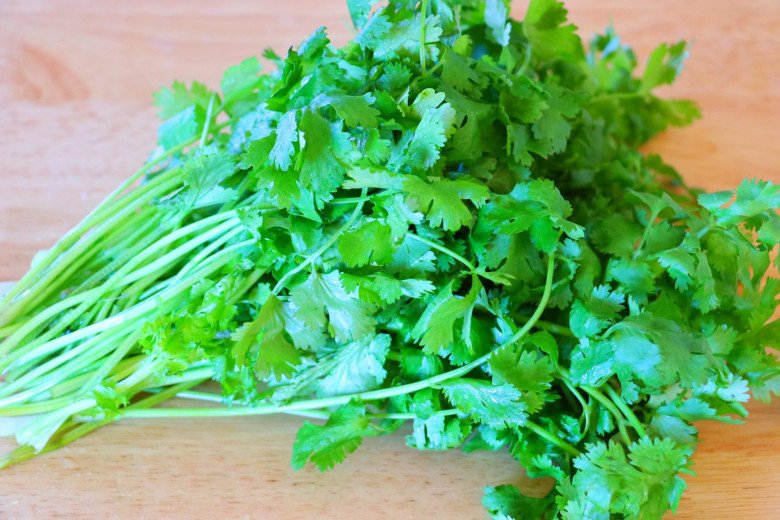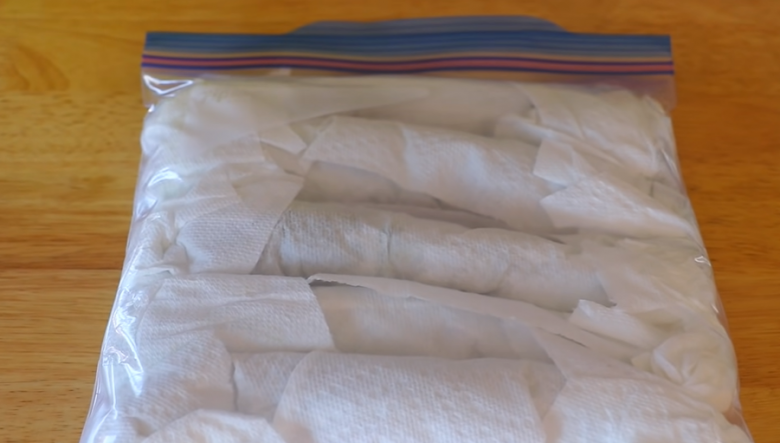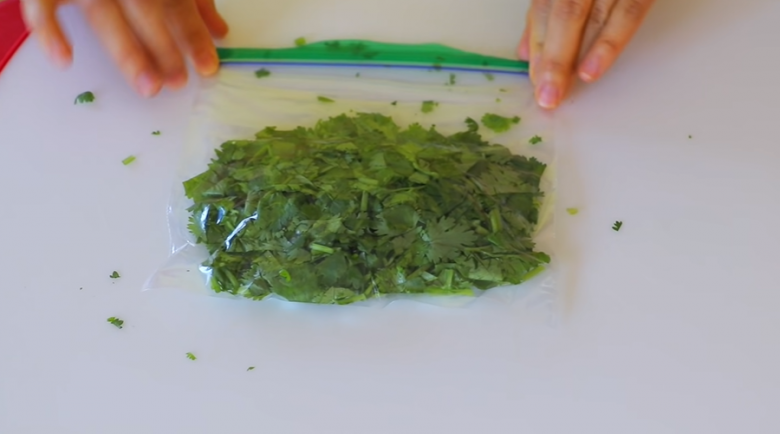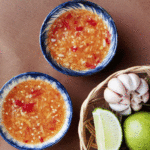
Cilantro, also known as coriander, is a popular herb used in many dishes. However, it doesn’t stay fresh for long. If you buy a large bunch, you’ll need to know how to store it properly to avoid waste. Check out these three methods for keeping cilantro fresh, with one method lasting up to three months:
1. Submerge cilantro in water and store it in an airtight container in the fridge
– First, pick and clean the cilantro, removing any damaged leaves or stems.
– Fill a glass with about 2 inches of water.
– Place the cilantro in the glass, with the stems submerged in the water. Then, cover the cilantro with a large ziplock bag.
– Place the glass in the fridge. Stored this way, the cilantro should stay fresh for 2 to 4 weeks, depending on its condition when purchased.

2. Store cilantro in paper towels and a ziplock bag
It’s best not to wash the cilantro before using this method.
– Start by drying the cilantro as much as possible.
– Take two paper towels and roll half a bunch of cilantro inside them. If your cilantro is longer than the paper towels, use another paper towel and tear it in half to ensure a snug fit. Wrap the ends of the bunch in the same way.

– Place the rolled-up cilantro in a large ziplock bag. Repeat with the remaining cilantro.
– Squeeze out any excess air from the bag and place it in the fridge.
Note: If you wash the cilantro before storing it, it will last for about 2 weeks. If you don’t wash it, it can last up to 4 weeks, depending on its initial freshness.

3. Chop cilantro and freeze it
– Start by washing and drying the cilantro. Then, chop it finely.
– Place the chopped cilantro in a small ziplock bag and store it in the freezer.
Using this method, you can keep cilantro fresh for at least 3 months. When you need to use it, there’s no need to thaw it first. Just take out the desired amount and add it directly to your soups, stews, or stir-fries. However, if you thaw and refreeze the cilantro, the quality will deteriorate, and it won’t taste as good.
Note: Cilantro stored using this method is not suitable for garnishing dishes. It is meant to be used in cooked dishes only.

Good luck!
The Ultimate Superfood: Unveiling the Veggie that Kept Rosé Guessing
Parsley, or more specifically, parsley essential oil, is a powerful antibacterial, antiseptic, and antifungal agent. It is particularly beneficial for oily skin due to its ability to effectively absorb excess sebum. This makes parsley an ideal natural remedy for achieving a balanced and clear complexion.
The Perfect Blend: Mastering the Art of Vietnamese Dipping Sauce for Escargot
Delicious snail fish sauce is an irresistible flavor enhancer. This savory condiment is a must-have for any culinary enthusiast, as it awakens the senses and adds a unique twist to your dishes. The aroma and taste of this sauce are truly exceptional, taking your taste buds on an adventure with every bite.






































